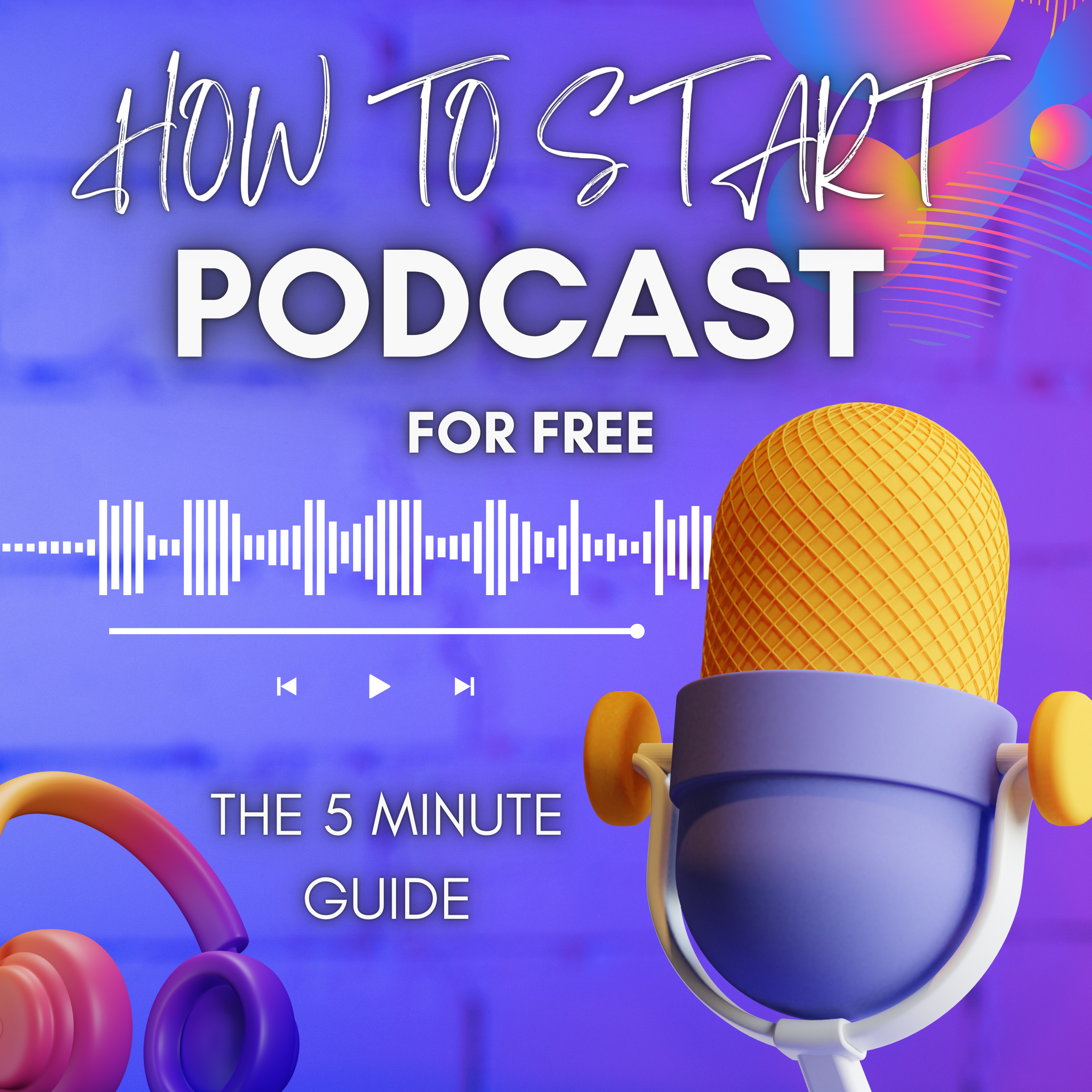What is a podcast?
The term “podcast” refers to any audio program that is uploaded to an RSS feed and can be anything from a talk show to an audio dramatization.
The concept is extremely comparable to that of radio shows, but there is one significant distinction. Podcasts are able to be played whenever the listener chooses. Following the recording of the show, it is then uploaded to a hosting service. After that, you can access the show on your computer or smartphone and listen to it whenever you want.
Setting Up
1. Select the appropriate topic
Take some time to think about what you’d like to talk about and what your are passionate about. If your not in love with your topic there is a good change that your podcast will fail.
2. Set up your podcasting equipment
You can start a podcast for free. You do not need to spend a lot of money on fancy equipment to get started.
When it comes to recording, producing, and publishing your podcast, you’ll need either a mobile phone, a laptop, or a desktop computer.
Mic
If you are beginning completely from scratch, it is likely that you do not have an external microphone lying around. You don’t need to worry about it because you can record using the microphone that comes built into your phone or computer. However, you should be aware that doing so may ultimately result in recordings of lower quality.
Camera
You can use the camera that came with your computer or the webcam that you have set up for work if you want to create a video podcast on your own computer. You could also use the camera on your mobile device. Because some smartphones, like iPhones, are capable of shooting in 4k quality, this is frequently the superior option.
3. Find some free software for recording
It is absolutely necessary to have a tool for recording podcasts.
It is very challenging to record a podcast, especially if you do not have access to a high-quality recording studio. Recordings can be ruined by things like background noise, wind, and echo, which can also make your podcast sound unprofessional.
And what should you do in the event that you have multiple guests recording from various locations? It’s possible that one line is crisp while the other is crackly. It’s possible that one of the hosts will yell out, while the other will speak in a whisper.
Free podcast recording software that includes audio mixing tools that can be adjusted while recording, as well as audio repair tools that can be used after the fact to remove unwanted sounds and reverb, are what you require. To one’s relief, there is a plethora of podcasting software available, each of which contains all of the tools necessary to produce a podcast of superior quality and mixing.
1. AudioDirector
Because it allows for the recording of up to 99 separate audio tracks, features professional-grade tools for audio recording and mixing, and a fully functional audio editor, AudioDirector is the best podcast software on our list. As a result of its low cost and the ease with which it can be utilized, it is an excellent piece of software for recording podcasts, regardless of whether the user is a novice or an experienced podcaster.
2. Reaper
You can record, edit, process, and mix MIDI and audio tracks using the portable software known as Reaper, which is designed for recording podcasts. Podcasters and musicians can benefit from the professional recording and editing features offered by this software.
3. GarageBand
GarageBand is a podcast recording software that is available for free on Macs and can be used by users with intermediate skill levels to record and edit high-quality audio.
To read in in-depth review of some popular podcast software read this article.
You will, of course, require a free podcast host as the very last step. A podcast host is the entity that is responsible for storing and distributing your podcast episodes. There is a wide variety of free podcast hosts available, such as Anchor, that can also provide you with important insights regarding the performance of your podcast and assist you in monetizing your content.
4. Podcast host
Now that everything you need for podcasting it’s time to get started.
Start Recording
1. Plan your podcast.
Investing some time in planning and coming up with ideas is required before you can move on to recording the first episode of your podcast. In spite of the fact that this may appear to be tedious or even unnecessary, planning can, in the long run, remove a significant amount of anxiety from the process. And because the only thing you need is your imagination and your mental capacity, there is nothing to lose by giving it a shot!
At this point, you should work on honing the identity of your podcast, planning out some episodes (even if only in a general sense), and, if you plan to record with guests who are located in different locations, coordinating your recording schedules.
Step 2: Find Your Studio
The next step is to locate an appropriate location for making the recording. It’s not necessary to have a studio that’s completely soundproofed in order to record audio of a high quality. However, because doing so will increase the likelihood that you will record audio that is free from flaws, it is important to take the time to seek out the most suitable environment to which you have access.
Step 3: Register for your free podcast recording tool and host.
The next step is to select a podcast recording tool and a podcast host, then register for both of those services and set up an account with them. The process of signing up for a recording tool such as Riverside is very simple. However, the host of your podcast will most likely require some information about your podcast, such as the name of your show, a description of it, and cover art. Therefore, make sure that you have some of these on hand.
Step 4: Setup your equipment
Your next step is to ensure that you are well prepared to record. It is essential to ensure that everything operates as intended and communicates with one another in the correct manner, even if your setup is relatively basic and uncomplicated. You should also make sure that you take the time to become familiar with the features of the recording tool that you are using, for instance.
Step 5: Record your first episode.
After you have everything organized and are prepared to begin, it is time for the exciting part, which is recording your first episode. Take a deep breath, unwind, and try to enjoy the ride.
Step 6: Edit the recording that you made.
Immediately following the conclusion of your recording session, you will be tasked with getting the unprocessed recording in question ready for distribution. This does not necessarily imply the need for granular intervention; however, if that is what you desire, it is possible. If you want to get your podcast publication ready as quickly as possible, you have the option of using integrated tools like Riverside’s editor. You could also decide to use a free editing tool so that you can take your time during the post-production phase of your podcast.
Step 7: Upload the file to the host of your podcast and distribute it.
When you are satisfied that your podcast is ready to be distributed, you will need to upload your recording to the hosting website for your podcast. If you have not already done so, you may be required to provide additional information or fill out distribution forms for particular listening platforms. Some hosts take care of this task for you automatically.
Step 8: Publicize the episode of your podcast.
As soon as your podcast is available to the public, you will need to put in some effort to promote it. This entails making contact with the people in your network and requesting that they forward the latest episode to their own circle of acquaintances. You should also take initiative on the social media associated with your podcast.
Step 9: Find ways to make money off your content
You are not required to take this step in order to start making money from your podcast; however, you do have the option to monetize your content and do so. Your podcast host may provide integrated monetization features such as dynamic advertising or subscriptions; however, you can also set up a third-party Patreon account in order to begin accepting donations from your listeners. These donations can be in the form of monetary support.
The most important thing to remember is that you have to keep recording and keep moving forward. Success might not be immediate but you have to practice.
You will find success!
DON’T GIVE UP!!!

